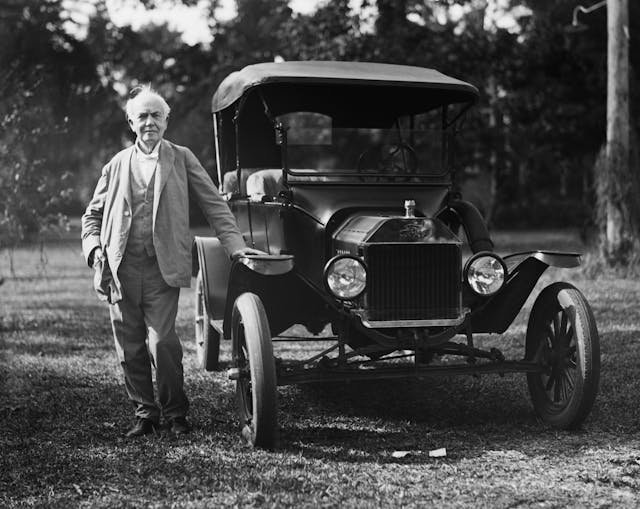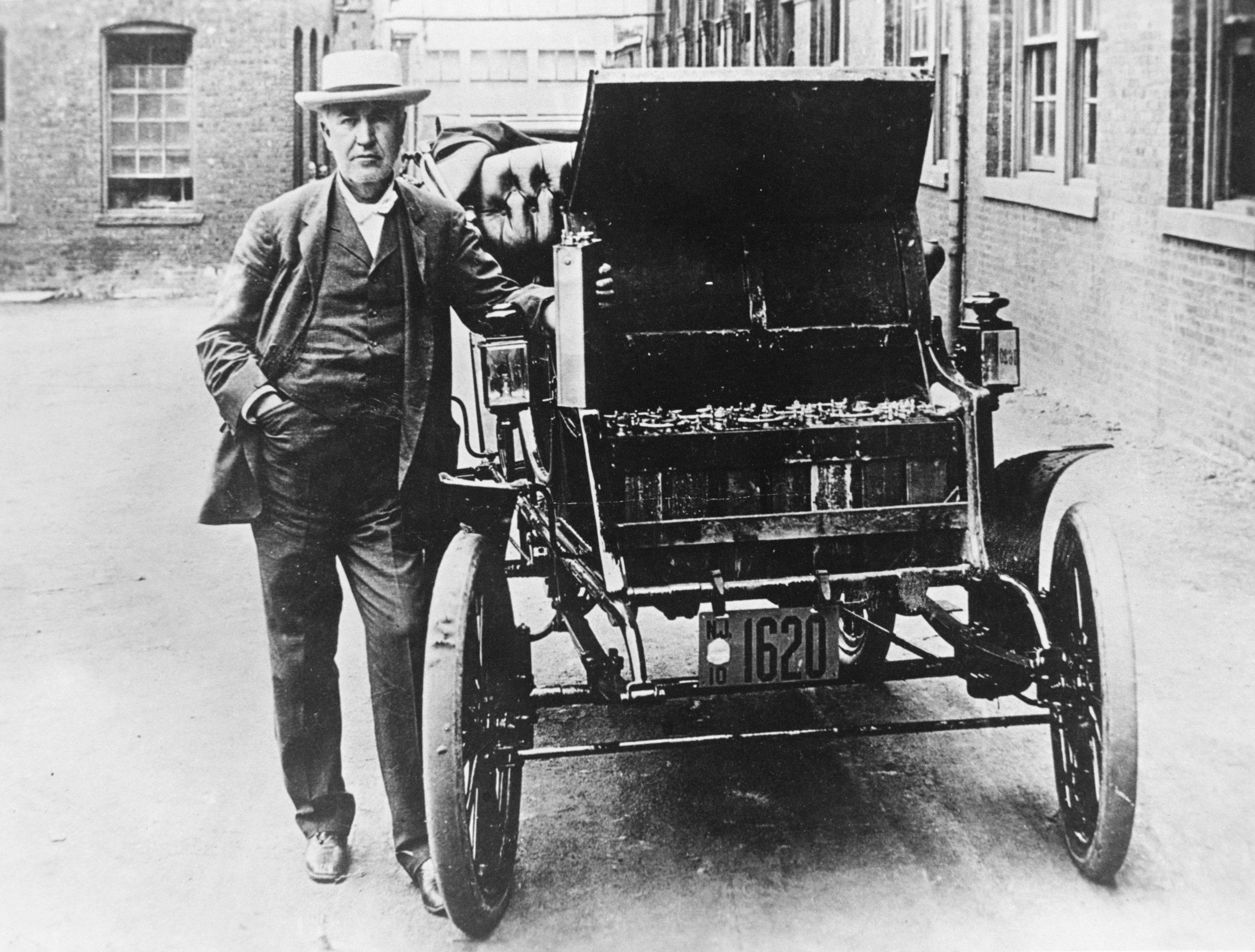Media | Articles
Thomas Edison, a man ahead of his time, built his own electric car in 1912
He was the Father of Invention, responsible for perfecting the incandescent light bulb in 1879 and holder of more than 1000 U.S. patents. Thomas Alva Edison advanced electric power generation, mass communication, sound recording, and motion pictures, to name a few. He also left his mark on the auto industry.
Edison, who died on October 18, 1931—90 years ago today—is known for his wide range of interests, but he always had a love for automobiles. In 1895, with the industry debating the benefits of gasoline and electric automotive technologies, Edison heard that one of his young engineers was working on a gas-powered car. He and that engineer, Henry Ford, would become lifelong friends, even though they were on opposite sides of the fuel source debate.
Edison, of course, leaned toward electric power. Back to that in a bit.

Edison and Ford remained close friends until his death in 1931. Among their shared activities were annual camping trips from 1914–24. Calling themselves the Vagabonds, the foursome of Ford, Edison, Harvey Firestone, and naturalist John Burroughs enjoyed the great outdoors in a way that today would be considered “glamping.” Edison also joined Ford for excursions to a small island, owned by Ford, on Grand Traverse Bay near Hagerty’s corporate headquarters in Traverse City, Michigan.
Ford revered the older Edison so much that in 1929 he had architect Edward J. Cutler build a reproduction of Edison’s original Menlo Park (New Jersey) laboratory for his 80-acre Greenfield Village museum complex in Dearborn, Michigan. The two also lived within 100 feet of each other at their winter retreats in Fort Myers, Florida.
Marketplace
Buy and sell classics with confidence

Back to the gas vs. electric debate: In 1899, Edison began working to develop an alkaline storage battery that could better support the electrical needs of a motor vehicle. It took him 10 years to perfect, and by then Ford had already introduced the Model T, which became a huge success and changed America forever.
Edison did not give up on his invention, however. Among his many U.S. patents was one for an “electric automobile,” of which he built three in 1912. The car never went into production, however.
Edison was still conducting experiments when he succumbed to complications from diabetes at age 84. Clearly a man ahead of his time, he was recognized for his contributions to the auto industry by being inducted into the Automotive Hall of Fame in 1969. Looking at the way in which powertrain development is now swinging squarely in the direction of electric propulsion, Edison is surely missing out on the opportunity for a last laugh at his old friend’s expense. After all, the name of Ford and Lincoln’s EV development program? Team Edison.














I saw this car of Thomas Edison’s in a museum in Sacramento California when I was 36 years old and I also own and possess one of Thomas’s first bottles that held his personal battery oil. May be interested in selling it ; it is all legible.
I am trying to put together a team to purchase a Chevrolet Volt. I am going to replace the 4cyl gas engine with an electric motor.